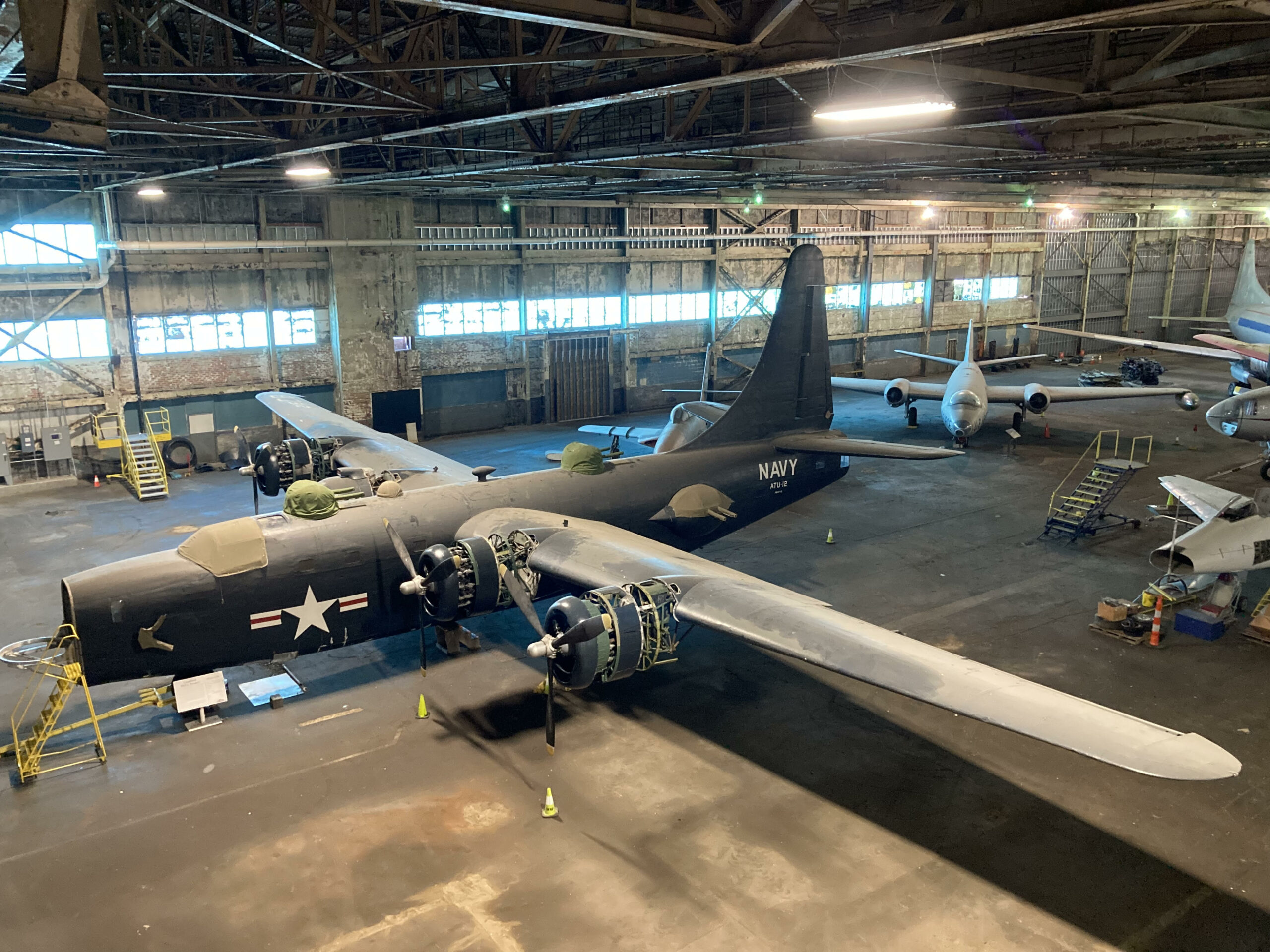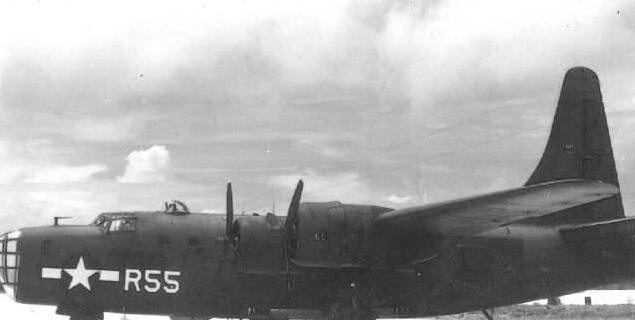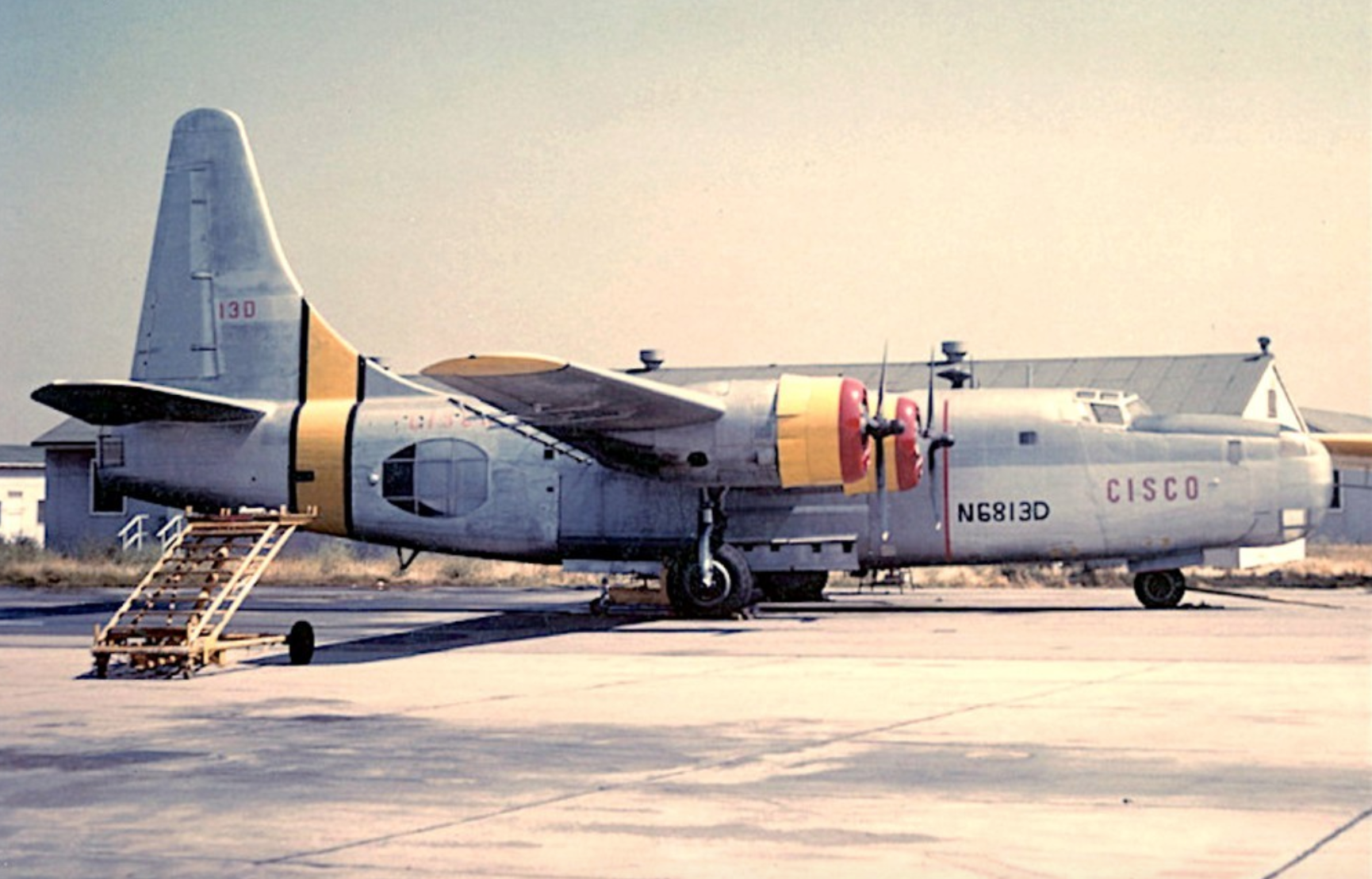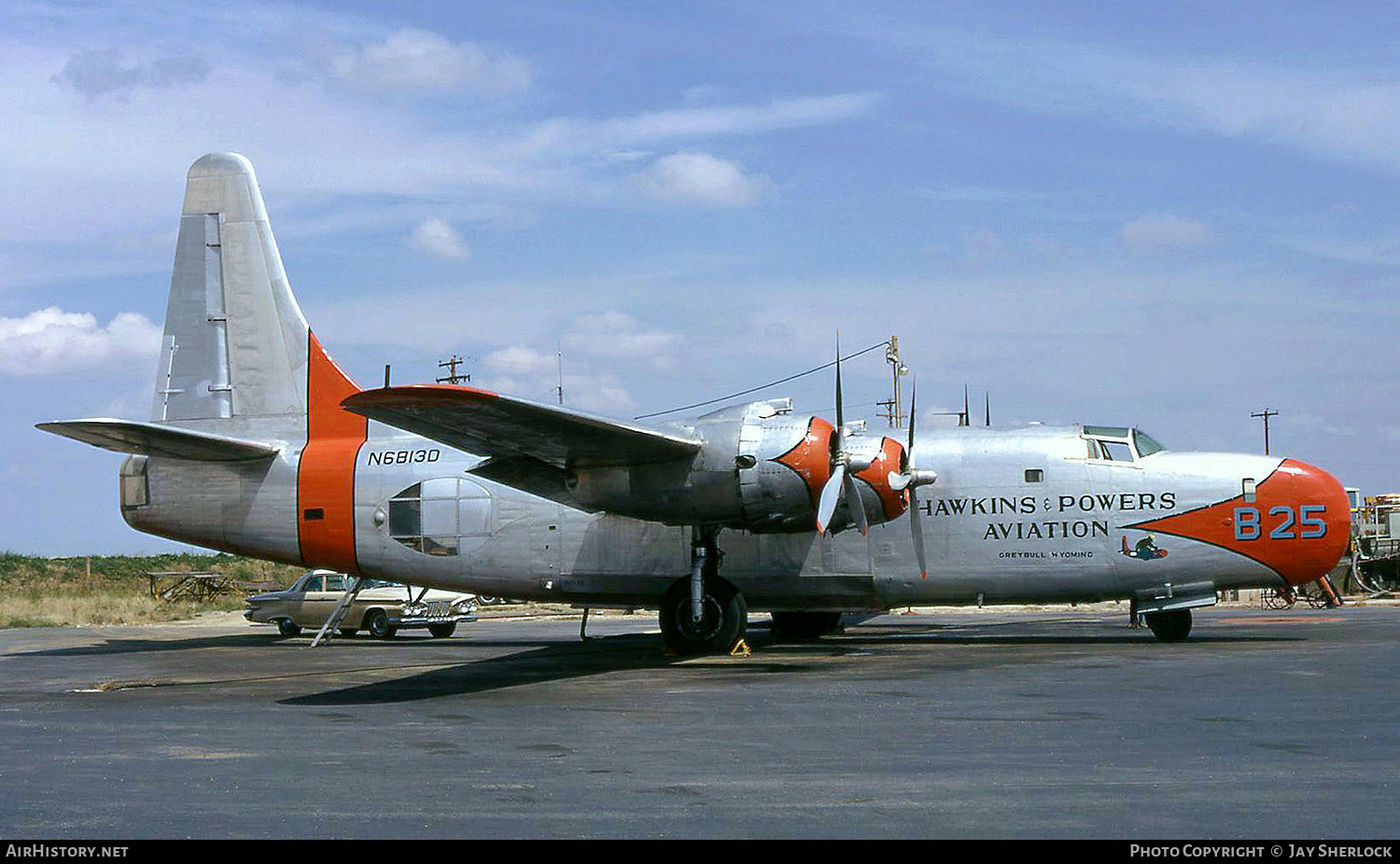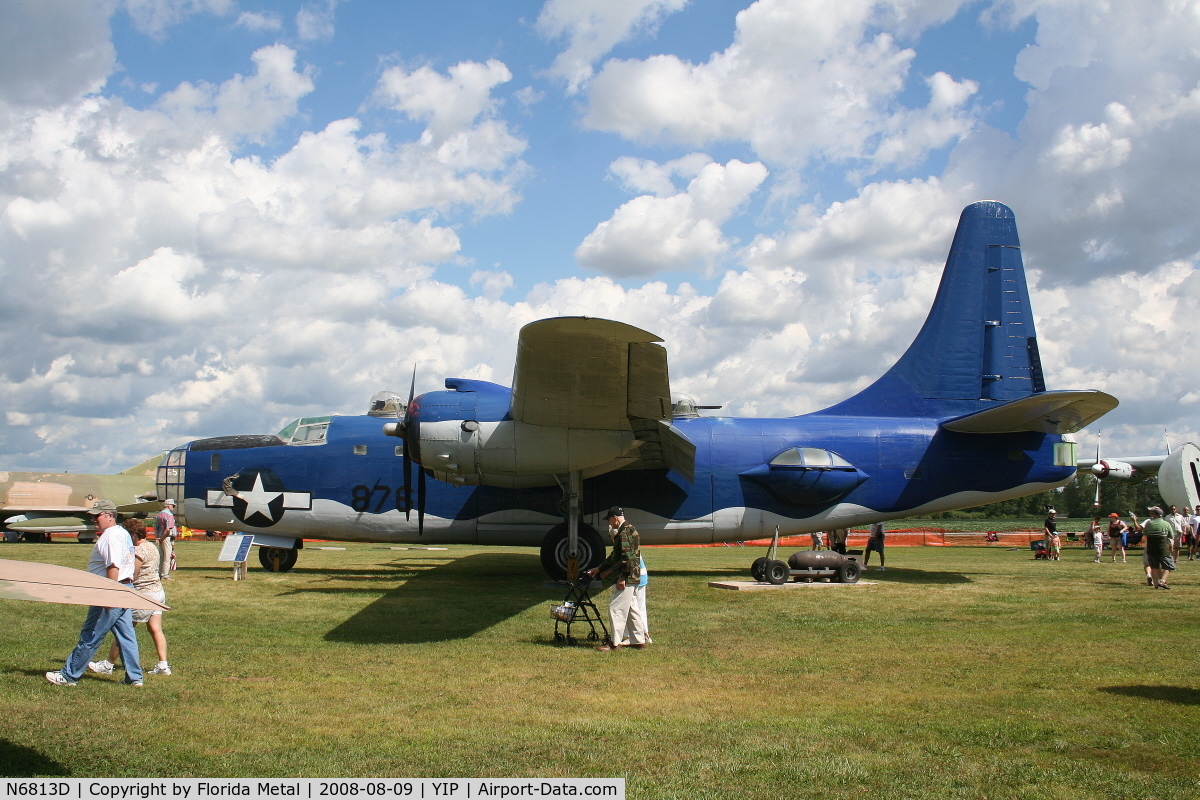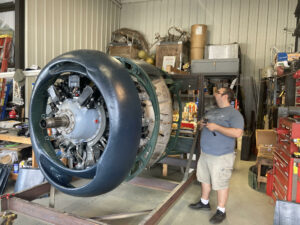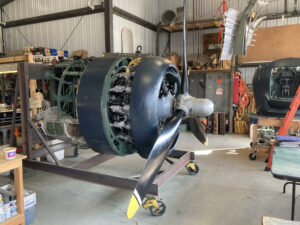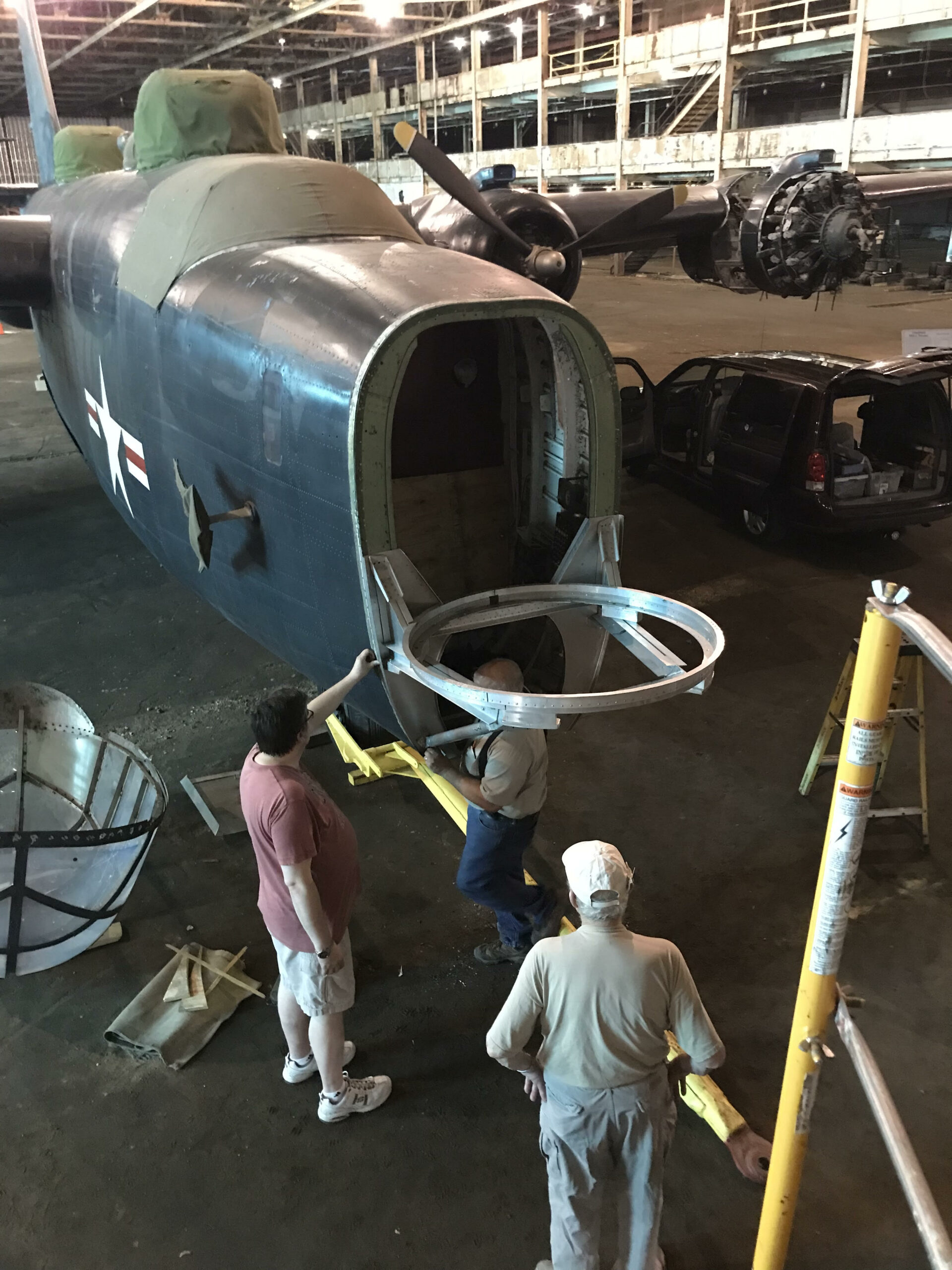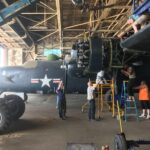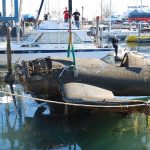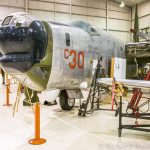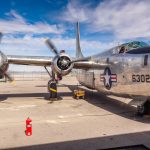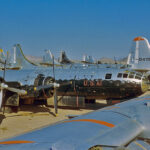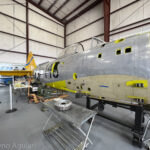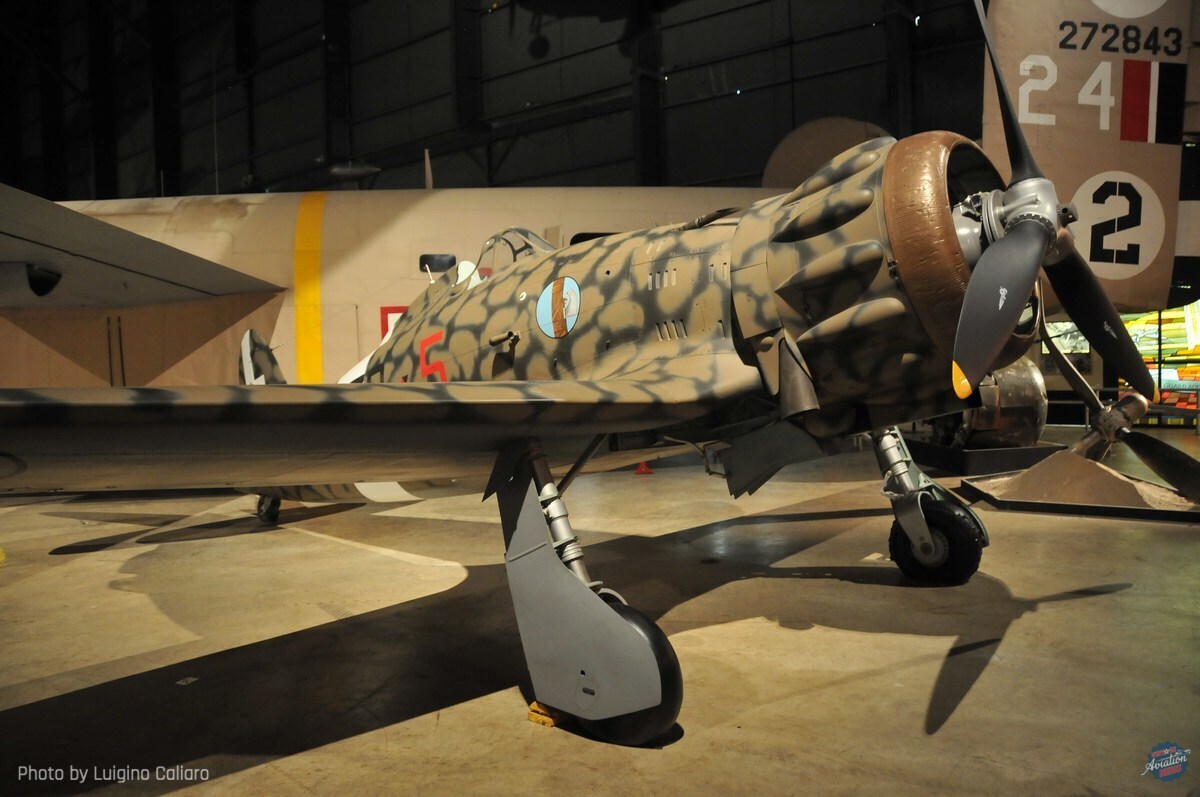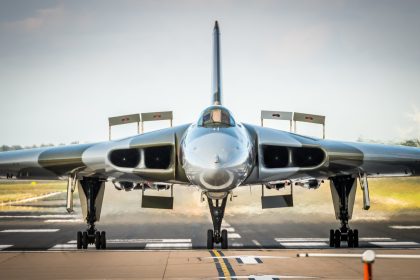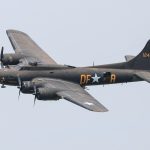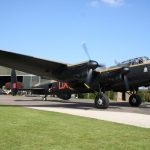by Adam Estes
For some years now, a dedicated team of volunteers with the Yankee Air Museum (YAM) has been hard at work restoring a Consolidated PB4Y-2 Privateer maritime patrol bomber at their facility in Willow Run, Michigan. The work is currently being undertaken in the very same hangars where the Ford Motor Company once built the type’s older sibling, the B-24 Liberator at the rate of one every 63 minutes during peak production in April, 1944.
With respect to YAM’s Privateer, it originally emerged from the Consolidated-Vultee (later Convair) plant in San Diego, California during the spring of 1945. The U.S. Navy accepted her for service as BuNo 59876 on April 27th, 1945, taking delivery on August 1st. The Navy first assigned the aircraft to Camp Kearny Naval Auxiliary Air Station (now Marine Corps Air Station Miramar). Alongside numerous other freshly-built Privateers, BuNo 59876 provided conversion training for naval aircrew transitioning from the type’s forebear, the PB4Y-1 Liberator (a navalized B-24). The men of Patrol Bomber Squadron 197 (VPB-197) were amongst those making use of ‘876 at this time.
Though 59876 would remain in the San Diego area for most of its naval career, it did spend time with other units, such as Weather Reconnaissance Squadron 1 (VPW-1) and as an element of Fleet Air Wing 14 (FAW-14).
YAM’s Privateer also had a brief stay at NAS Corpus Christi, Texas, but soon after found itself in storage at Naval Air Station Litchfield Park (now Phoenix-Goodyear Airport), in Goodyear, Arizona. It would remain in the desert sun until the U.S. Coast Guard ordered it out of mothballs on September 18, 1952. The Coast Guard had the one-time patrol bomber modified into a search and rescue variant, a P4Y-2G. On January 30, 1953, the U.S. Navy officially transferred ‘876 to the US Coast Guard, although the Privateer retained its original Bureau Number. The Coast Guard flew ‘876 primarily from Barbers Point, Hawaii, although it did make occasional deployments to Guam and Wake Island. With the availability of newer aircraft types, however, the WWII-era Privateers soon found themselves phased out of active maritime patrol service. In February 1954, ‘876 returned to storage at Litchfield Park, where she awaited an uncertain fate.
Thankfully, instead of the scrapper’s torch, this Privateer found a new career in the civilian sector. On December 27th, 1957, the Lysdale Flying Service of St. Paul, Minnesota purchased P4Y-2G 59876, registering her with the FAA as N6813D. The 1960s would see the old Privateer fly with several different owners as an aerial sprayer, working over farms from California to Montana. Despite her new role, the aircraft still wore much of its original Coast Guard livery, with yellow and black stripes on the tail and wingtips.
On November 25th, 1969, Hawkins & Powers (H&P) Aviation of Greybull, Wyoming acquired N6813D. This famed company was the primary postwar operator of surplus Privateers in the fire bomber role. N6813D was in a sorry state at this point, sitting engine-less at the local airport in Grass Valley, California. Hawkins & Powers soon spruced her up though, and equipped the Privateer with Wright R-2600 engines in place of the usual Pratt&Whitney R-1830s, with cowlings coming from surplus B-25 Mitchells. The R-2600 offered more horsepower than the original powerplant, which made the aircraft more responsive under heavy loads. With its fire bomber conversion complete, N6813D began flying on contracts for the US Forestry Service and the Department of the Interior. The aircraft wore three different side codes over the course of its firefighting career, starting with A25, then changing to B25 and finally wearing C125 (as Tanker 125). H&P’s Privateers would fly far from Greybull for much of the year, fighting forest fires across the western United States. This role would eventually lead to Tanker 125’s final flight.
During the summer of 1975, H&P sent Tanker 125 to fight fires in Alaska, basing her out of Anchorage. With the fire season nearing its end, Tanker 125’s pilots were told to fly back home to Greybull. On the evening of August 8th, 1975, Tanker 125 took off on the first leg of this journey, following the coastline down the Alaskan panhandle, bound for Ketchikan to refuel, as recounted by Todd Hackbarth in a 1993 article for Warbirds International. Things didn’t get off to a good start, however, as one of the four engines began to run rough, forcing the crew to shut it down and feather its propeller. To make matters worse, the weather in Ketchikan was poor, and Tanker 125 overshot the runway. Rather than return for a second attempt, however, the crew pressed on down the coast. In the pre-dawn hours of August 9th, Tanker 125’s fuel reserves began to run dry. Fortunately for them, the airport at Port Hardy on Vancouver Island was nearby, some 370 miles down the coast from their original destination at Ketchikan. With only one engine running, they came in on the final approach. However, the pilot felt they were still too high and decided to go around. In the darkness, however, the Privateer struck the ground, plowed through the airport perimeter fence, crossed the nearby beach with rocks and logs strewn about, and plunged into the cold waters of the Queen Charlotte Strait, settling in a hundred yards or so offshore.
The airport authorities called up their emergency services, who first looked to see if the plane had come down short of the runway. Meanwhile, in the Privateer, water rushed into the cockpit almost immediately. Thankfully, the two pilots were able to use the cockpit’s overhead hatches to escape the stricken firebomber. Since the plane hadn’t completely submerged, the two men could stand atop the fuselage. They soon spotted a seat cushion and used it to help them swim ashore. Initially too cold and exhausted to stand, they eventually regained their whits and wandered over the logs and through the bushes to the airport fence. By then, the fire crew was driving to the runways, figuring correctly that the aircraft had run through the fence and into the water. The Privateer’s pilots soon flagged them down, and made their way, a little scratched and bruised, to the relative warmth of the firetruck. Tanker 125 was not so fortunate, remaining battered and forlorn where she lay in the water as night turned into day.
A recovery team subsequently pulled Tanker 125 from the water, but she was obviously in a bad state of repair and had received a thorough dousing in salt water; clearly, her flying days were done. With the insurance claim settled, Tanker 125 remained derelict at Port Hardy Airport for the next six years. The Canadian Museum of Flight and Transportation (CMFT), then in the Vancouver suburb of Richmond, took an interest in adding the Privateer to its growing collection. They purchased the wreck from Aircraft Supply Ltd, but were then unable to raise the funds to transport the airframe from Port Hardy to Richmond, a distance of some 220 miles. By 1981, with the Privateer in significant disrepair and becoming a target for local vandals, the airport authorities wanted to get rid of it as soon as they could. Thankfully, a Michigan businessman decided to purchase the aircraft from CMFT, intending to modify the Privateer to represent a B-24 Liberator for static display. Unfortunately, rather than disassemble the airframe at its production breaks, the transportation team focused more on speed, cutting the aircraft up into more manageable sections for the journey to Michigan. They severed the fuselage from top to bottom forward and aft of the wings and cut the outer wing panels off, just a foot from their attachment points. Furthermore, they did not detach the propellers from the engines but rather cut some of the blades shorter to keep the overall width within the maximum permissible on the wide-load permit. The Privateer reached its destination in 11 large chunks, but upon its arrival in the Detroit area, the pieces were initially locked away in a nondescript pole barn.
On May 30th, 1986, the businessman donated what remained of Tanker 125 to the Yankee Air Force (now the Yankee Air Museum). It finally arrived at Willow Run Airport during the following October. Many volunteers at the time believed that the task of restoring the so-called “Scrap-a-teer”, even to static condition, was too great a task. However, they got to work and – within nine months – the Privateer was back on its landing gear again, with its fuselage patched back together. It went on static display in the museum’s air park nearby the main museum building, a vintage WWII-era hangar. Oddly enough, while being outside in the elements wasn’t ideal, the Privateer was spared further tragedy when the museum’s hangar (and much of its contents) were consumed in a massive fire during 2004.
The museum, thankfully, rebounded from that horrific setback, and has gone from strength to strength ever since. They have continued to dedicate effort to restoring the Privateer in the subsequent decades, and have gradually returned the airframe from its Coast Guard guise back to its earlier naval configuration, which has included replacing the inauthentic powerplants and cowlings as well as adding the correct (and extremely rare) gun turrets to the airframe. This work remains ongoing, now inside the hangars of the former Willow Run B-24 plant.
The museum’s Joe Amend recently provided us with some excellent details regarding the Privateer’s current status. Amend is one of the museum’s volunteers and has been working on the Privateer since 2006 (he also serves as the flight engineer on the museum’s B-17G, Yankee Lady).
“We have almost completed the bow turret,” Amend stated. “The turret is completely functional on 28-volt DC. No working guns of course. We could not find the bow turret mount, so after two trips to NAS Pensacola, we fabricated it in-house.”
“In October, we installed the last of four engines on the plane. It had the R-2600s on from Hawkins & Powers. We went to Idaho and pulled non-serviceable parts to build up four R-1830s, which we did over the last two years. We had found a set of nacelles in California with the engine mounts, back in 2008 or 2009. They needed some work before they could be installed. We are currently working on the stern turret, and the plan is to make it functional as well. The hydraulic pack is done, and the cylinders on the turret are completed as well. The control section will be this winter’s project. We are also working on the nacelle sheet metal and covers. It looks like we will have to do some metalwork on the wing attachments.”
Amend also described some of the earlier work the team has performed: “We had to make new formers at the bottom of the port fuselage – about 10 feet [near the pilot’s side of the cockpit]. This was damaged from dragging her out of the water onto the beach. We had to change the port side main landing gear and the front landing gear and framework. While we had her up on stands, we foam-filled all three tires.”
“When I started on the plane in 2006, we were short the starboard blister turret. We had two portside – one mounted, and the other mounted on a rolling frame. Both were complete with the gun carriage. We found the starboard blister in California, however, it was an empty shell. We pulled the gun carriage from our extra port and installed it into the new blister and installed it into the plane. We have both Martin top turrets installed. We plan to switch the front turret, as the one we have is not the correct dash number for the PB4Y-2. We have secured that turret, and it is under restoration off-site.”
Much remains to be completed on the Yankee Air Museum Privateer, but the aircraft which was once considered a write-off has already come a long way since its arrival at Willow Run back in 1986. For those wishing to stay up to date on this project or who would like to contribute to the restoration project, please visit the Yankee Air Museum’s website HERE.







